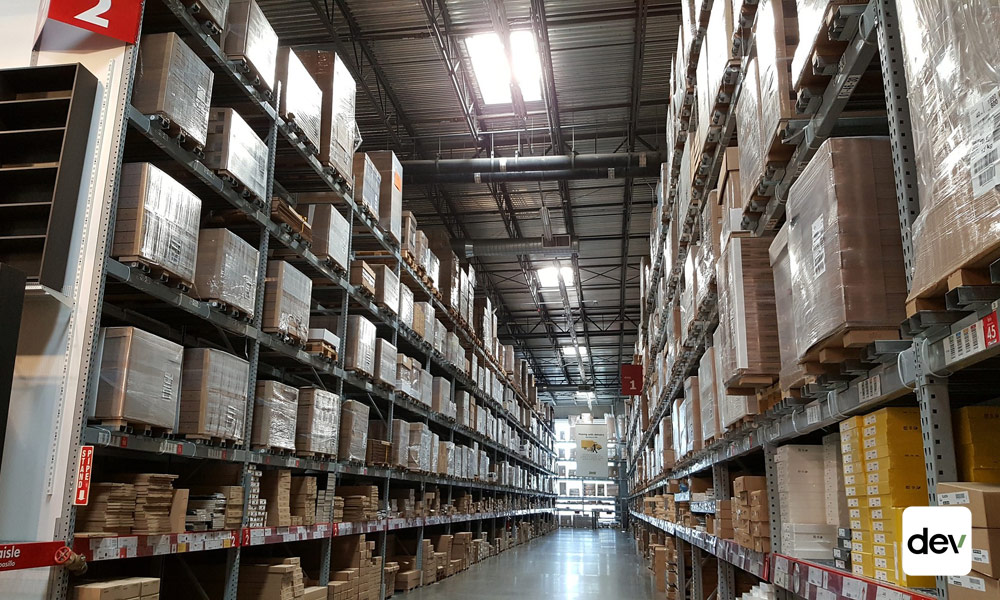
Business
What Is Commercial Real Estate? Definition and Examples
Understand the fundamentals of commercial real estate (CRE) with this guide that covers what commercial real estate is and its various types. Read about the significance commercial real estate holds for investors, developers, and the economy. Perfect for beginners looking to navigate the complex world of commercial property investment.
Commercial real estate is more than just office buildings and shopping centers; it includes apartment buildings, self-storage, warehouses, data centers, hotels, hospitals, and more. Read on to learn more about this $20.7 trillion U.S. asset class and what makes it an attractive investment.
What Is Commercial Real Estate?
Commercial real estate (CRE) is property used to produce income (i.e. for commercial, investment, or business-related purposes). It differentiates from residential real estate used for single-family housing by meeting the criteria of having more than four units on a single parcel. (multifamily is still considered commercial real estate).
CRE properties are usually designed to generate income, either by leasing space to tenants or through capital appreciation (usually both). The business of CRE involves everything from a property’s initial construction or acquisition to its day-to-day management and eventual disposition through selling, subleasing, or lease buyout.
Types of Commercial Real Estate
Commercial real estate can be categorized into many types:
Multifamily
Multifamily properties are residential buildings with five or more living units that can include:
- Apartments
- Condos
- Townhomes
- Mobile home parks
- Senior housing
- Student housing
- Subsidized housing
Typically, multifamily units are leased to individuals or families on a monthly or annual basis to generate rental income. Owners are responsible for managing and maintaining the property.


Office
Office buildings are leased to businesses—companies that need space for their employees to work (usually in administrative or professional roles).


Depending on the office, it could serve one or multiple tenants, an urban or suburban area, and various types of businesses: corporations, law firms, healthcare facilities, tech companies, government agencies, educational institutions, and more.
Additionally, office buildings are often grouped into three classes:
- Class A offices are the newest and highest-quality buildings in prime locations with state-of-the-art amenities.
- Class B offices are slightly older (usually between 10-20 years), located in non-central areas, and need some maintenance or repairs.
- Class C offices are the lowest quality offices. They’re usually older than 20 years, require substantial renovation, and are located on the outskirts of town.
Retail


Retail buildings are spaces for marketing and selling consumer goods and services. These can include shopping centers, strip malls, grocery stores, restaurants, and clothing shops.
Despite the rise of ecommerce (accelerated by the COVID-19 pandemic), retail property remains a major CRE sector with strong demand as consumers still value in-person shopping.
Industrial


Industrial real estate refers to buildings for manufacturing, distributing, and storing goods. It includes warehouses, storage facilities, distribution centers, factories, data centers, and flex spaces (properties designed for multiple different industrial tenants).
Generally, industrial properties have open floor plans and tall ceilings to accommodate large equipment and high quantities of goods and workers. This is also why they are typically located outside the city, where there is more space and zoning regulations are looser.
Hotel


Hotel properties provide short-term lodging and other hospitality services to individuals and families. They are often located in high-demand areas such as city centers, near airports, or in vacation destinations.
Of course, hotels can vary widely from budget motels to luxury resorts. As a result, they are often categorized as limited- or full-service, with the latter including extra amenities such as on-site dining, spas, room service, and more.
Land


Some investors buy raw land for agricultural, recreational, or development purposes. This could be greenfield land that has never been used before, infill land between existing buildings (usually in dense areas), or brownfield land that was developed previously and may require demolition or major renovation.
Mixed-Use
As the name suggests, mixed-use real estate refers to properties that serve multiple purposes. It could be an apartment building with retail shops on the ground floor, a property that combines office and industrial space, or a hotel that doubles as a restaurant.
Special Purpose
Commercial properties that don’t fit any of the above categories are generally considered special purpose real estate. These can include movie theaters, churches, aquariums, and other properties that can’t easily be converted for other uses.
Why invest in commercial real estate?
Commercial real estate can be a great investment for many reasons:
Attractive Returns
According to the National Council of Real Estate Investment Fiduciaries (NCREIF), as of Q1 2021, the average 25-year return for private commercial real estate properties held for investment purposes was 10.3%. Meanwhile, the average annualized returns of the S&P 500 Index was 9.6%.
Stable Cash Flow
On top of capital appreciation, CRE properties can provide stable cash flow. This is especially true for properties with long-term leases and single, double, or triple net (NNN) leases, which make tenants responsible for some or all operating costs.
Diversification
Unlike most residential real estate, many CRE properties have multiple tenants, allowing owners to mitigate losses from turnover and vacancies.
In addition, commercial real estate has a low correlation with the stock market, making it a great hedge against equity exposure. And since owners can pass on inflationary pressures to tenants through rent escalations, CRE is also a great hedge against inflation.
Versatile Asset Class
Prospective CRE investors can take a hands-on approach by acquiring property directly and becoming a landlord, or they can invest passively through real estate investment trusts (REITs), syndications, or crowdfunding platforms.
Moreover, prospective investors can choose from various investment risk profiles:
- Core investments: Properties in high-demand areas with relatively little risk and potential return
- Value-add projects: Projects that require some capital improvements and come with higher risk and potential returns
- Opportunistic projects: Properties that require significant renovation or are being developed from scratch and provide the most risk and potential return


Frequently Asked Questions
What is an example of a commercial property?
Examples of a commercial property include apartment buildings, offices, retail stores, hotels, warehouses, and land.
What is another name for a commercial landlord?
Another name for a commercial landlord is a property owner or building owner.
What are examples of commercial use in real estate?
Examples of commercial use in real estate include office space, retail stores, and multifamily residential units.




